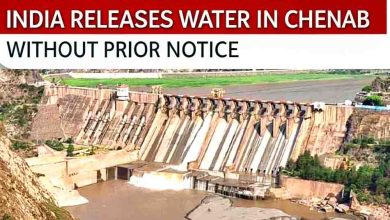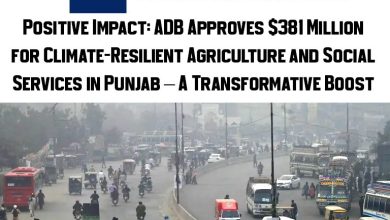Scorched Lives: The Brutal Reality of Climate Change for Women and the Vulnerable in Pakistan
Discover how climate change in Pakistan is severely impacting women and vulnerable communities. From floods to heatwaves, learn why gender-sensitive climate policies are urgently needed.
Climate change and women in Pakistan are colliding in devastating ways. With every flood, drought, or heatwave, women—especially the poor, elderly, and pregnant—bear the brunt. In its 2022 Gender and Climate Change Action Plan, the Government of Pakistan admitted that women face disproportionate impacts, especially during natural disasters and post-flood disease outbreaks.
But the numbers don’t tell the full story. Lives like those of Zulekha Bibi, a 75-year-old patient in Peshawar, paint
Real Stories from the Ground
Zulekha Bibi, admitted to Lady Reading Hospital, recalls a time when life was simpler—even without electricity. “The heat is so intense now, it’s hard to breathe. Sixty years ago, we lived without fans, but it was bearable. Now, it feels like the air itself is punishing us,” she laments.
Meanwhile, Seema, a resident of Nowshera who relocated after the 2010 floods, remembers how her village was swallowed by rising waters. “Most women couldn’t swim or climb trees,” she says, “because no one ever taught us.”
These aren’t isolated tragedies—they represent the alarming intersection of climate vulnerability and gender inequality in Pakistan.
Why Women Suffer More During Disasters
Khalida Niaz, a senior journalist and award-winning climate reporter from Peshawar, explains the grim reality: “Our society doesn’t train women in disaster preparedness. Cultural norms and lack of resources leave them helpless during floods, earthquakes, and heatwaves.”
Cultural expectations—such as purdah (veiling)—delay evacuation during emergencies. In fact, during past floods, many women had to climb fragile rooftops for safety—risky moves that often resulted in further injury or death.
More disturbingly, about 70% of displaced persons after disasters are women, who suffer from poor access to hygiene, food, and medical care.
Pregnancy, Malnutrition, and Heat: A Triple Threat
Nutritionist Dr. Bushra Khalil from Lady Reading Hospital emphasizes that pregnant and menstruating women need specific nutrients, but climate change is destroying food diversity. Reduced access to fruits and vegetables has led to widespread anemia, hormonal imbalances, and weakened immunity among women.
“Extreme weather isn’t just uncomfortable,” she warns, “it’s deadly—especially for elderly women like Zulekha Bibi, who face life-threatening consequences due to heatstroke, poor nutrition, and air pollution.”
Respiratory illnesses, asthma, and allergies are spiking among women in urban centers like Peshawar. The invisible poison? Dust, smoke, toxic gases, and UV radiation.
Government Response and Gaps
Shahab Ali Shah, Chief Secretary of the Provincial Disaster Management Authority (PDMA), confirms that climate change is intensifying seasonal disasters across Khyber Pakhtunkhwa. The Monsoon Contingency Plan 2025 identifies 11 high-risk districts, launching preemptive actions such as:
-
Clearing drainage systems
-
Reinforcing embankments
-
Launching dewatering units in Peshawar
-
Cracking down on illegal construction
PDMA’s helpline 1800 is active 24/7 for emergency support.
However, critics like Khalida Niaz argue that gender sensitivity is still missing in most policies. “Until women’s needs are fully integrated,” she says, “they’ll remain the first to suffer and the last to recover.”
The Role of Awareness and Resilience
Professor Dr. Akmal Khan, former Director of the Climate Change Center, warns that Pakistan’s seasonal cycles are becoming dangerously unstable. Rainfall arrives when it’s least needed, and fails when it’s most critical—ruining crops and risking food insecurity.
“In patriarchal households,” he notes, “women often eat last and least. Climate-induced food scarcity will hit them hardest.”
Meanwhile, Professor Dr. Asif Khan from the University of Peshawar urges immediate afforestation, greenhouse gas reductions, and disaster mapping. He adds, “Forests in KP could absorb up to 50% of Pakistan’s carbon emissions—but only if preserved and expanded.”
Conclusion: A Call for Climate Justice
The intersection of climate change and women in Pakistan is a clear case of environmental injustice. Despite their marginal contribution to global emissions, Pakistani women are suffering disproportionately—especially in rural areas.
Yet, there is hope. Grassroots efforts, often led by women, are growing across Pakistan. From tree planting drives to disaster training sessions, women are not just victims—they’re becoming climate defenders.
But they need support—policy-level backing, gender-inclusive budgets, access to healthcare, and climate education.
As Khalida Niaz rightly puts it:
“Climate change is not just an environmental issue; it’s a social, economic, and gender crisis. Until we address all three, there can be no real climate resilience in Pakistan.”







